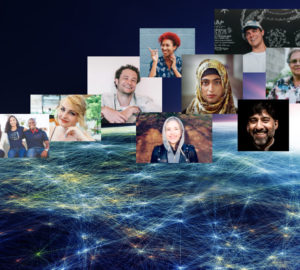
COVID + CLIMATE = OVERWHELM
The challenge of holding two existential threats in mind at the same time
Today, my news feed is utterly packed with virus news – the rate of spread, city-by-city, state-by-state, country-by country, with accounts of medical system overwhelm, government response, and public cooperative efforts contrasted with heedless gatherings. We are in a global state of health and social emergency.
One month ago, my news feed was dominated by climate news – the rate of warming, local, regional, national and global effects, with stories of loss of biodiversity, innovative responses, youth-led activism and utterly critical timelines for action.
Both streams speak to direct existential threats. COVID-19 imperils us individually and millions around the world right now, today, and in the coming year. At the same time, the human-driven changes in our climate are a menace to the survival of species of innumerable species of life, and bid to flood our cities, burn our countrysides, and create hundreds of millions of climate refugees in the next few decades. We are faced with unprecedented challenges to our survival, and we are called to attend to both at the same time, a nearly Herculean trial of our ability to focus and act.
Our in-the-moment focus on the novel virus is understandable and actually imperative. We are facing potential meltdown of many of our social systems and, with that, our ability to deal with anything beyond our immediate survival. Accordingly, our capacity to address the disruption of the biosphere requires sufficient social stability to organize our collective response to global warming, in spite of how we have struggled to act effectively thus far. However, much like the vitally important “flatten the curve” model for infection, we also must act immediately to reduce the speed of climate disruption or reap ever-redoubling effects of ocean rise, extreme heat, violent weather, and species extinction. To hesitate now, on either, is to doom ourselves to exponentially worse outcomes.
Thus we are tasked with holding both crises fully in mind, no small feat. In truth, humans are ill-equipped to attend to two threats simultaneously. Multitasking is a neurophysiological myth. Instead, we are going to have to become skilled at switching up, bringing our attention and intention to bear on one, then the other, and back again, for the foreseeable future. Yes, it feels like double work. It is double work. That being said, we have little choice.
Here’s what we can do:
First, name it and tame it. Allow yourself to recognize and feel the sense of overwhelm. Identify it, sense it, accept that it is part of life right now, and then mentally place it on a nearby shelf where it can be known but not in charge. You can tell that feeling that you won’t forget or deny it, and it is not in charge right now. This frees you up to do your work.
Next, set a specific amount of time that you will commit to each of these two mental marathons in a day, and make those allocations of time and energy reasonable for your mental, physical and spiritual well-being. Allow as how it could be as little as ten minutes or as much as several hours – whatever you honestly sense is healthy for you and explicitly forgive yourself for maintaining self-care boundaries. Within those time frames, read or listen to a limited amount of news, opinion and research. Take action for a defined period of time (contributing to social media, writing or calling government officials, informing family and friends, etc.). Choose actions that have the greatest return on your investment. Not all action is equal, and when we are tired, we tend to lose effectiveness quickly.
Thus, equally important is to dedicate a separate measure of time, every day, to self-care. Each of us responds to different mixtures of regenerative inputs. Among those can be exercise, meditation, fun or inspiring reading and video consumption, gazing on absorbing images of nature, or getting outside to take in the healing bounty of the earth around us – trees, clouds, flowers, birds and more. Whatever works for us, our self-care should be non-negotiable in our overall allocation of time. Without it, we undermine our short-term and long-term capacity for service. With it, we are rejuvenated, our innovative thinking expands, our compassion deepens. In this, we enhance our potential to see new answers, ones that will address the sources, and generate the solutions, to both crises. And so the loop closes, from recognizing and forgiving our sense of overwhelm, to strengthening our ability to work in spite of it.
This is our time. We did not aspire to it, we would dearly love for it to be different, and nonetheless, in this moment, we are called to action. Finding our way forward with a measure of wisdom, grace, and inspiration in both of these stories is the task that falls to us.
Kit Tennis





